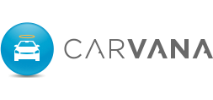Predict if a car purchased at auction is a lemon.
One of the biggest challenges of an auto dealership purchasing a used car at an auto auction is the risk of that the vehicle might have serious issues that prevent it from being sold to customers. The auto community calls these unfortunate purchases "kicks".
Kicked cars often result when there are tampered odometers, mechanical issues the dealer is not able to address, issues with getting the vehicle title from the seller, or some other unforeseen problem. Kick cars can be very costly to dealers after transportation cost, throw-away repair work, and market losses in reselling the vehicle.
Modelers who can figure out which cars have a higher risk of being kick can provide real value to dealerships trying to provide the best inventory selection possible to their customers.
The challenge of this competition is to predict if the car purchased at the Auction is a Kick (bad buy).
Data understanding (30 points) Data semantics (3 points) Distribution of the variables and statistics (7 points) Assessing data quality (missing values, outliers) (7 points) Variables transformations (6 points) Pairwise correlations and eventual elimination of redundant variables (7 points)
Clustering Analysis by K-means: (13 points) Choice of attributes and distance function (1 points) Identification of the best value of k (5 points) Characterization of the obtained clusters by using both analysis of the k centroids and comparison of the distribution of variables within the clusters and that in the whole dataset (7 points) Analysis by density-based clustering (9 points) Choice of attributes and distance function (2 points) Study of the clustering parameters (2 points) Characterization and interpretation of the obtained clusters (5 points) Analysis by hierarchical clustering (5 points) Choice of attributes and distance function (2 points) Show and discuss different dendograms using different algorithms (3 points) Final evaluation of the best clustering approach and comparison of the clustering obtained (3 points)
Frequent patterns extraction with different values of support and different types (i.e. frequent, close maximal), (6 points) Discussion of the most interesting frequent patterns (7 points) Association rules extraction with different values of confidence (6 points) Discussion of the most interesting rules (7 points) Use the most meaningful rule to replace missing values and evaluate the accuracy (4 points)
Learning of different decision trees with different parameters and gain formulas with the object of maximizing the performances (12 points) Decision trees interpretation (6 points) Decision trees validation with test and training set (6 points) Discussion of the best prediction model (6 points)
Title page is not counted in the 20 page limits, i.e., you can have 20 pages + 1 title page, the page limit is strict: additional pages will not be considered for the final evaluation, i.e., pages 21,22,23 etc. will not be read and evaluated. The project size must not exceed 25Mb, i.e. you must be able to send it by email without compression. Only PDF file are allowed, you do not have to submit python code or the knime workflows. The final paper must be easily readable, i.e., it is better to use font size higher than 9pt. Use a readable font size, e.g. Arial, Times New Romans You can use multiple columns and change the margin size but the project must be readable. It is NOT required to put python code, knime flows, or theoretical descriptions of the algorithm in the final paper. You must justify every choice you make with respect to the features used and selected for each algorithm and the parameters you tune. Discuss every result. Plots without any comment are useless. Even if you find a top configuration for your algorithm (e.g. K-Means with k=5) you MUST list which are the different parameters you tested and justify your choice. You can get 3 additional extra points in the final mark with respect to the following criteria: Innovation (0.5 points) Experimentation (0.5 points) Performance (0.5 points) Appearance (0.5 points) Organization (0.5 points) Summary (0.5 points)
